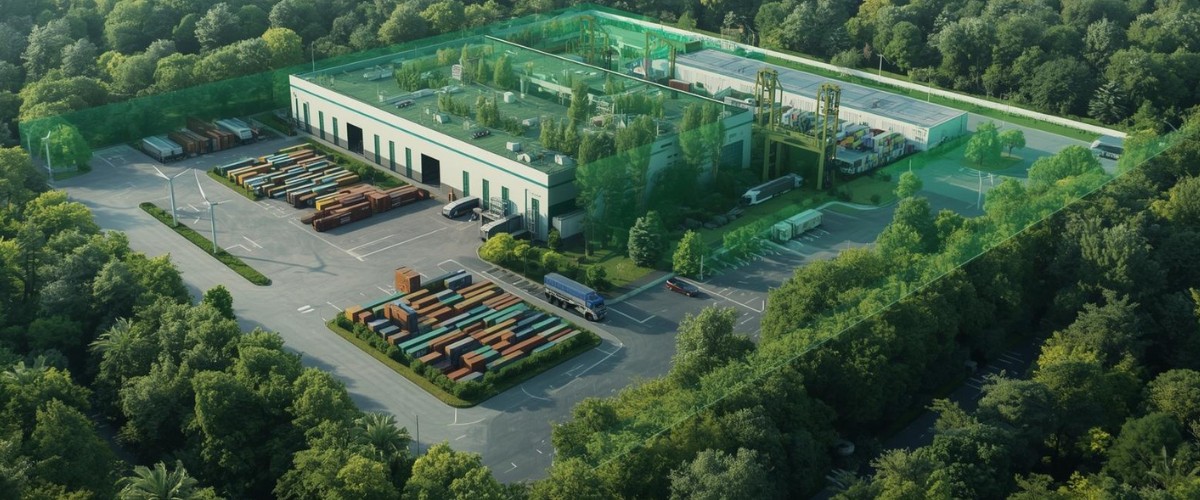Forest Products

Factories are becoming smarter, but not just because of smarter machines; they also use smarter materials. As industries worldwide buckle up for the urgency of climate goals, the answer to decarbonization is not always to be found in advanced technology or synthetic innovation; sometimes, it is found in the forest.
Sustainable forest products are enabling a new industrial transformation by converting renewable, carbon-storing materials into the building blocks of a low-carbon future in supply chains. From packaging to construction, textiles to bioenergy, industries are also rediscovering wood-based solutions for scalable, circular, low-carbon alternatives to fossil-intensive materials.
This is not a return to the past; it’s the future of industrial decarbonization.
ALSO READ: Smart Growth: Business Development Strategies for the Connected Factory
Rethinking Materials for a Low-Carbon Future
Industrial manufacturing has long relied on the use of high-emission materials: steel, plastics, and concrete. But as the pressure mounts to achieve net-zero emissions, organizations are rethinking their material inputs.
Sustainable forest products provide a renewable pathway. Unlike traditional materials, responsibly sourced timber, pulp, and bio-based composites store carbon rather than emit it, helping industries lower their overall footprint.
Forward-looking companies now mix nature-based materials with technology-driven design to come up with lightweight, high-strength alternatives that deliver on performance requirements while supporting sustainability goals.
Shift in Supply Chain: From Linear to Circular
In a linear economy, raw materials are extracted, used, and discarded-a model which accelerates both emissions and waste. Transitioning to the circular economy begins with the design and sourcing of materials.
Sustainable forest products fit seamlessly within this shift. They are renewable, recyclable, and biodegradable-things that every industry looking to create closed-loop supply chains wants.
For instance, the companies producing packaging are substituting single-use plastic with fiber-based ones, and logistics providers are switching to using wooden pallets sourced from certified forests. The changes may appear small, but in their aggregate, they create a ripple effect that cuts through emissions, reduces waste, and reinforces environmental accountability along the entire value chain.
Traceability and Transparency: The ESG Imperative
Sustainability isn’t just a product feature; it’s a corporate commitment.
Investors, regulators, and consumers increasingly demand traceable, verifiable proof that goods are sourced responsibly.
Through certification systems, such as the Forest Stewardship Council, businesses can ensure their use of sustainable forest products aligns with global environmental and social standards.
Digital tools, including blockchain-enabled tracking, today enhance traceability from forest to factory. This transparency not only meets ESG disclosure requirements but also strengthens stakeholder trust.
Responsible sourcing for industrial leaders is no longer optional; rather, it’s a competitive differentiator.
Bio-Based Innovation: The Next Frontier
Innovation does not stop with raw materials. Today, research in forest biotechnology and green chemistry is producing new generations of sustainable forest products-from bio-based polymers to wood-derived textiles and renewable fuels.
Such products bridge the gap between sustainability and industrial performance. Bio-based adhesives, nanocellulose composites, and lignin-based resins are already finding their place, replacing petroleum-derived inputs within construction, automotive, and packaging sectors.
Investing in forest-based innovation means industries can decarbonize without compromise: maintaining quality, durability, and functionality while drastically reducing their environmental footprint.
The Leadership Mindset: How to Turn Climate Goals into Growth
To executives, decarbonization is not just about compliance; it’s about competitiveness. Companies that integrate sustainable forest products into their supply chains enjoy a long-term advantageous position:
- Lower exposure to carbon taxes and regulatory risks
- Improved brand image amongst eco-sensitive consumers
- Improved resilience through renewable sourcing
- Innovation-driven revenue opportunities
Industrial transformation requires both bold thinking and practical execution, and sustainable forest products deliver on both: connecting profit and purpose through tangible, measurable climate action.
Growth That Grows Back
The path to industrial decarbonization runs through the forest. By embracing sustainable forest products, industries are discovering that progress and preservation aren’t opposites-they’re partners. By using each ton of wood, fiber, or bio-composite responsibly, carbon is stored, fossil inputs are replaced, and ecosystems are regenerated. For the business leader, the formula is crystal clear: sustainability is no longer a cost; it is a growth strategy that grows back.
Tags:
Forest ProductsAuthor - Samita Nayak
Samita Nayak is a content writer working at Anteriad. She writes about business, technology, HR, marketing, cryptocurrency, and sales. When not writing, she can usually be found reading a book, watching movies, or spending far too much time with her Golden Retriever.


